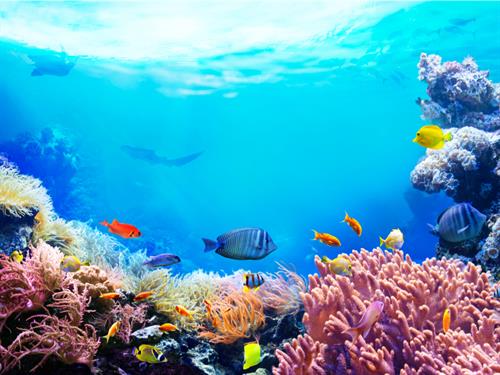
PUMPA - SMART LEARNING
எங்கள் ஆசிரியர்களுடன் 1-ஆன்-1 ஆலோசனை நேரத்தைப் பெறுங்கள். டாப்பர் ஆவதற்கு நாங்கள் பயிற்சி அளிப்போம்
Book Free DemoA group of living organisms that live, thrive and interact with each other and its aquatic environment for nutrients and shelter is the Aquatic biome. Similar to terrestrial biomes, many abiotic factors influence aquatic biomes. Covering around 75% of the earth's surface aquatic biome is the largest of all the biomes. Aquatic biomes are broadly classified as freshwater biomes and marine biomes.
A. Freshwater Biomes:
Though small compared to that of marine biome, freshwater biomes play a key role in sustaining life on land. It comprises lakes, ponds, rivers, streams, wetlands etc. Like other biomes, freshwater biomes are also influenced by various abiotic components such as volume of water, water flow, oxygen composition, temperature, etc.
Humans depend on freshwater biomes for various needs such as drinking water, crop irrigation, sanitation and industry.
Humans depend on freshwater biomes for various needs such as drinking water, crop irrigation, sanitation and industry.
Flora: Water lily, lotus, duckweeds etc.,
Fauna: Trout, salmon, turtles, crocodiles
B. Marine Biomes:
It includes major oceans such as the Pacific, Atlantic, Indian, Arctic, and Southern, and also smaller Gulfs and Bays. Covering about 70% of the Earth surface, they are the largest aquatic biomes on earth. They are continuous bodies of saltwater that provides habitat to a wide range of marine plants and animals.
Coral reefs are the second kind of marine biomes within the ocean and are major marine biomes. Despite its small size, it provides habitat for around 25% of the marine species. The third type of biome is Estuaries. Estuaries are coastal regions where freshwater (from river or stream) and saltwater mix.

Life in coral reef
Compared to the terrestrial biome, the Marine biome has a quicker and efficient circulation of nutrients because they provide maximum mobility to marine organisms.
Plants such as kelp, algae, phytoplankton etc., grow in water. Healthy Aquatic biomes are not only important for plants and animals but also for human society. They serve a variety of humans needs such as food, feed for livestock, raw materials for medicines, natural defence against coastal hazards etc.
Plants such as kelp, algae, phytoplankton etc., grow in water. Healthy Aquatic biomes are not only important for plants and animals but also for human society. They serve a variety of humans needs such as food, feed for livestock, raw materials for medicines, natural defence against coastal hazards etc.